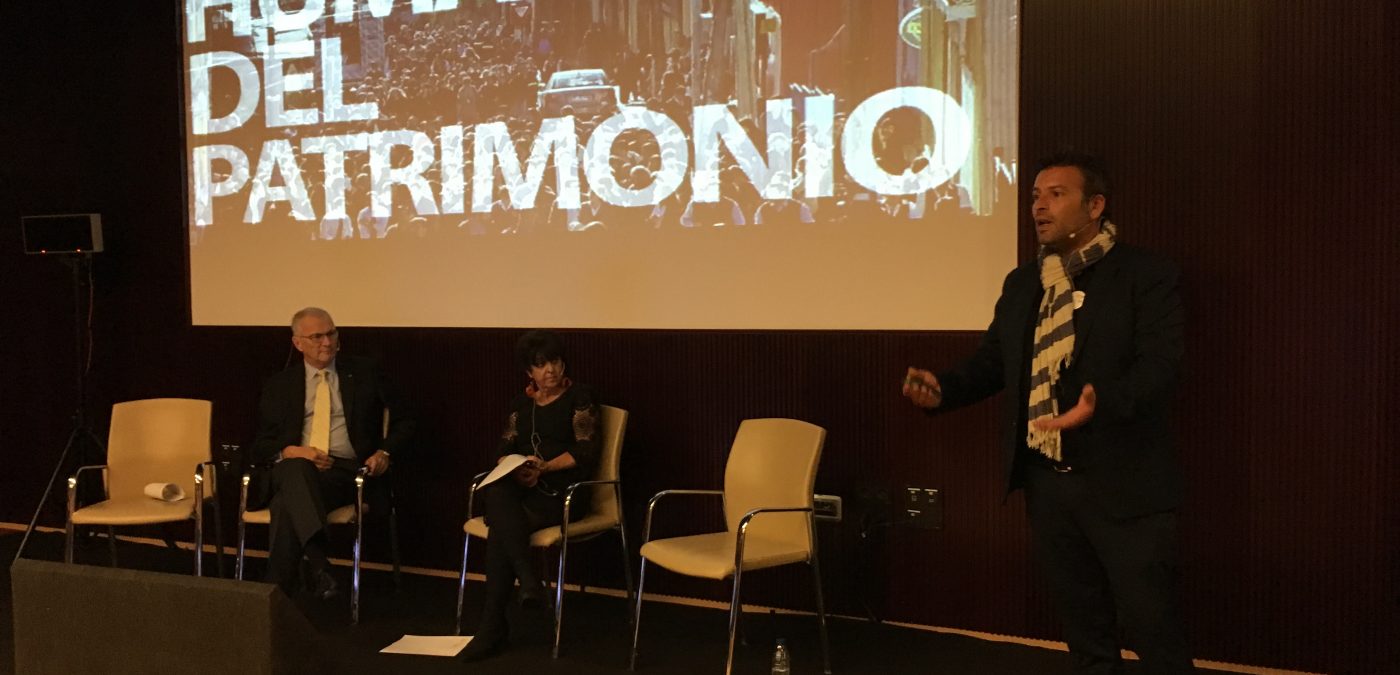
The city of Cordoba (Spain), home of the Southern Europe and Mediterranean Regional Secretariat of the Organization of World Heritage Cities (OWHC), hosted the INTERNATIONAL BIENNIAL ON HERITAGE, on December 15, 16 and 17. The event was organized jointly with the city of Valparaiso, Chile – home of the OWHC’s South American Regional Secretariat – for the purpose of verifying the positions supported during its convocation, approve them by a majority, and outline strategic, combined work guidelines for the next few years.
Concretely:
Culture should be considered transversally.
Heritage is a source of progress and wealth.
Culture builds a city.
During these three days, the Biennial of Cordoba benefited from the presence of:
- 50 cities represented
- 18 city, business and organization booths
- 115 presentations
- 15 panel discussions
- 40 presentations on good practices
- 12 audiovisual presentations
- 250 registrations
Following an analysis of the program’s objectives by participants ― professionals and organizations alike ― the decision has made to establish strategic guidelines to help create a framework to promote the development, follow-up and systematic assessment of work presented during this first edition and provide a permanent interface between the participants and others who might join later.
Objective 1
Take advantage of the international potential of Cordoba to convene a biennial meeting to address the economics of heritage by introducing improvements and presenting achievements in the sustainable management of heritage at the territorial, urban, architectural, object-oriented and intangible levels.
Strategic guideline 1
Consolidate a platform around the economics of heritage that will serve as a meeting place for participants and a means to promote good practices.
Objective 2
Introduce an approach and useful, attractive content applicable to a local environment that is based on discussion embracing a global context: the economics of heritage are not necessarily passive; heritage does not necessarily need to be subsidized; heritage can and must generate wealth and employment.
Strategic guideline 2
Establish a work method to maximize the full potential of the Biennial and likely to generate good practices welcomed in local communities.
Objective 3
Consolidate the most extensive network possible, characterized by a heritage component.
The Biennial is convened to capitalize on networks of cities with already existing historic relations.
The experience shared with the OWHC by the Regional Secretariats ― with the support of Cordoba and Valparaiso ― adds to the leverage and impetus of the north and south hemispheres and contributes to encouraging other cities, organizations and public and private corporations involved in culture and heritage to join the initiative.
Strategic guideline 3
The presentations, exchanges and business proposals communicated during the Biennial are likely to become networked projects. Thus, the Biennial of Cordoba becomes a platform for good practices by providing the technical means and coordinating their progress and follow-up.
Objective 4
This Biennial has a local and a global component. It is a meeting place to assess the progress made by our model city, as well as a global event to discuss realities and new paths made in the sustainable management of heritage cities.
From this perspective, the Biennial of Cordoba may be viewed as a stage of excellence to showcase teaching and learning experiences ― an event for creative cities to act together, share best practices, raise the bar in terms of performance and improve the quality of decisions and local projects. Think globally, act locally.
Strategic guideline 4
All the networked projects that emerged during this first convocation and that will develop as a result of the momentum of their promoters and partners will present the progress made during other biennials to come: Valparaiso in 2018, Cordoba in 2020, and others to come until the final objectives have been achieved.
During the Biennial of Cordoba, discussions on the future were enriched by participants’ contributions and opinion leaders’ experience and knowledge. From this perspective, a scientific committee will be set up to ensure follow-up and offer advice on the directions and tasks that the Biennial of Cordoba and the Biennial of Valparaiso should address. People who participated in these debates will be invited to sit on this committee.
Valparaiso will host the next edition of this international biennial. Participants in the event will be able to make the most of the input from parts of Spain and new input from the Americas to further deepen debate and contribute positively to enriching the outcome.
During the event, Denis Ricard (Secretary General of the OWHC) had the pleasure to meet with Isabel Ambrosio Palos, Mayor of Cordoba and Federico Mayor, former Director-General of the UNESCO.
[[{“fid”:”5078″,”view_mode”:”colorbox”,”fields”:{“format”:”colorbox”,”field_file_image_alt_text[und][0][value]”:false,”field_file_image_title_text[und][0][value]”:false},”type”:”media”,”field_deltas”:{“1”:{“format”:”colorbox”,”field_file_image_alt_text[und][0][value]”:false,”field_file_image_title_text[und][0][value]”:false}},”link_text”:null,”attributes”:{“height”:”427″,”width”:”320″,”class”:”media-element file-colorbox”,”data-delta”:”1″}}]]
Interesting fact: 20 years ago, Mr. Ricard, accompanied by former Mayor of Quebec and President of the OWHC Jean-Paul L’Allier, as well as former Secretary General of the OWHC Marcel Junius, met Federico Mayor in the OWHC headquarters in Quebec City.
[[{“fid”:”5079″,”view_mode”:”colorbox”,”fields”:{“format”:”colorbox”,”field_file_image_alt_text[und][0][value]”:false,”field_file_image_title_text[und][0][value]”:false},”type”:”media”,”field_deltas”:{“1”:{“format”:”colorbox”,”field_file_image_alt_text[und][0][value]”:false,”field_file_image_title_text[und][0][value]”:false}},”link_text”:null,”attributes”:{“height”:”232″,”width”:”320″,”class”:”media-element file-colorbox”,”data-delta”:”1″}}]]


